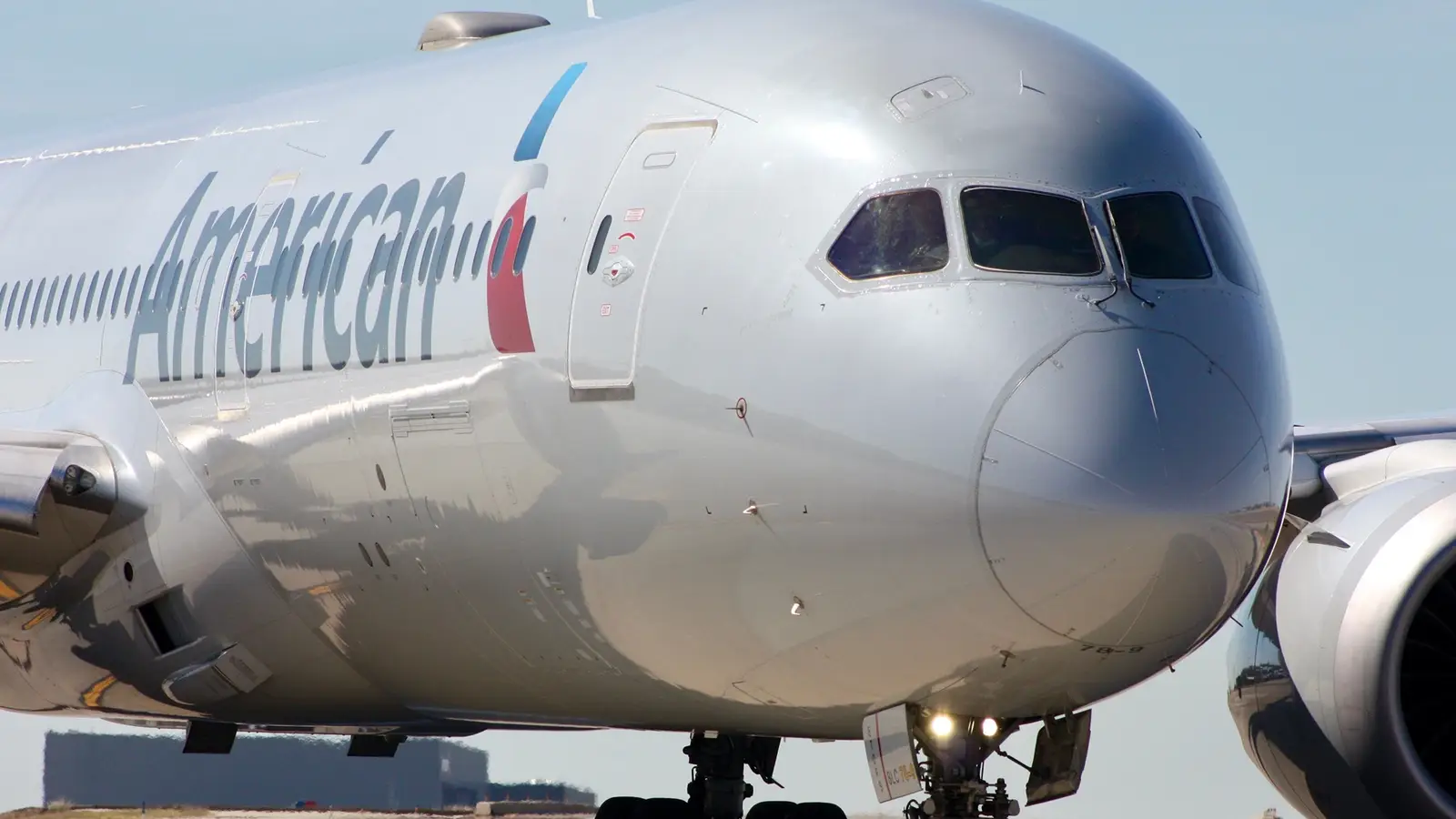
In recent years, American Airlines has pushed the boundaries of long-haul travel, using its fleet of Boeing 787‑9 Dreamliners to connect far-flung corners of the globe more comfortably and efficiently than ever before. The airline’s longest 787‑9 routes not only showcase the technological advances of modern aviation, in fuel efficiency, range, and passenger comfort, but also reflect shifting priorities in international air travel, expanding direct connectivity, seasonal demand, and premium service.
From the new record breaker between Dallas/Fort Worth International Airportand Brisbane Airportto seasonal hops over the Pacific, these routes map a changing global network that stretches the physical and commercial limits of what it means to fly nonstop. In this article, we’ll explore the furthest-reaching of American’s 787‑9 services, how far they fly, what makes them possible, and what they tell us about the future of ultra-long haul travel.
Ultra-Long-Haul Global Connectivity: 7,000 To 9,000 Miles
Several of American Airlines’ ultra-long-haul routes fall in the 7,000–9,000-mile range, linking the United States with key destinations across the world. The longest such example is Dallas/Fort Worth International (DFW) to Brisbane Airport (BNE), measuring about 8,299 miles. American has around 144 flights in each direction scheduled on this route for the 787-9 this year, offering nearly 39,000 seats per leg. This nonstop service connects Texas to Australia’s third-largest city, reflecting growing demand for transpacific travel beyond traditional gateways like Los Angeles International Airport
Another important market is DFW to Auckland Airport (AKL) at 7,439 miles. With 138 flights each way and more than 39,000 seats per direction, this service strengthens American’s Pacific presence. By bypassing West Coast hubs, DFW–AKL provides direct connectivity for travelers from the central and eastern areas of the United States, supporting both leisure tourism and business ties with New Zealand. The route also enhances alliance connectivity, as American coordinates closely with Qantas in this region.
In Asia, the DFW to Shanghai Pudong International Airport (PVG) route stands out at 7,351 miles. Scheduled for 248 eastbound and 247 westbound flights, it totals more than 70,000 seats per direction, by far the highest seat volume of the 7,000–9,000-mile routes, highlighting Shanghai’s role as a major economic hub.
Long-Haul Transoceanic And Intercontinental Services: 5,000 To 7,000 Miles
Several of American’s transoceanic flights fall within the 5,000–7,000-mile range, connecting the US to South America, Europe, and parts of Asia. A prime example is John F. Kennedy International Airport (JFK) to Tokyo Haneda Airport(HND) service at 6,773 miles. With 359 flights scheduled in each direction and over 102,000 seats, this route underscores the strong demand for nonstop US to Japan connectivity. Tokyo remains a critical hub for business and leisure travelers, and Haneda’s convenient location near the city center makes it a particularly attractive gateway.
On the South America front, the DFW to Buenos Aires’ Ezeiza International Airport (EZE) route spans 5,286 miles. With around 66 flights each way and more than 16,000 seats. Similarly, the DFW to Sao Paulo Viracopos International Airport (GRU), at 5,111 miles, is a heavy hitter with 366 flights each way and more than 103,000 seats per direction. These connections are vital for trade and multinational corporate travel between the US and South America.
American also deploys its Boeing 787-9s on several transatlantic routes in this mileage band. For example, Philadelphia International Airport(PHL) to Doha Hamad International Airport (DOH) at 6,798 miles operates daily, totaling 366 annual flights and over 104,000 seats. Another example is the route from Los Angeles International Airport (LAX) to Tokyo Haneda (HND), which spans 5,488 miles, with over 240 annual flights in each direction and approximately 69,000 seats. These routes show an example of how American balances demand between Europe, the Middle East, and Asia in the medium to long-haul segment, leveraging Philadelphia and Los Angeles as key gateways in addition to New York and Dallas.
A Comparison Of American’s Longest Routes
Routes in the 5,000–7,000-mile bands form the backbone of American’s long-haul portfolio. These services generate over 850,000 seats and account for the largest share of long-haul ASMs. Markets such as New York–Tokyo Haneda, Philadelphia–Doha, and Dallas–São Paulo are the strongest contributors.
By contrast, the 7,000–9,000-mile band features far fewer flights, just over 1,000 annually, but represents some of the most prestigious and demanding ultra-long-haul markets, showcasing the range and capability of the 787-9. Routes such as Dallas–Brisbane, Dallas–Auckland, and Dallas–Shanghai fall in this category, linking the US directly with Oceania and East Asia. While the seat totals are smaller at 297,000, the strategic importance is high, since these markets capture long-haul leisure demand, premium business travel, and alliance-driven connectivity.
When comparing the two, it’s clear that the 5,000–7,000-mile routes deliver higher seat and frequency volumes, supporting steady traffic flows between established business and cultural hubs. Meanwhile, the 7,000–9,000-mile flights, though fewer, extend American’s global reach and diversify its network. Together, they illustrate American Airlines’ long-haul strategy, consolidating its strength in medium- to long-haul transoceanic travel while competing in the ultra-long haul arena, where stage length and operating efficiency become key differentiators.
Balancing Domestic And Overseas Connectivity: 2,000 To 5,000 Miles
The 2,000–5,000-mile segments include many of American’s transatlantic services, linking US hubs to Europe. A strong example is the Philadelphia International Airport(PHL) to London Heathrow Airport (LHR) route at 3,546 miles. With 576 annual flights in each direction and more than 156,000 seats, this is one of the airline’s largest long-haul markets by frequency. Other key transatlantic routes include Philadelphia International Airport (PHL) to Zurich Airport (ZRH) at 4,025 miles, and Philadelphia International Airport (PHL) to Barcelona-El Prat Airport(BCN) at 3,925 miles, both of which provide over 29,000 seats annually.
The mileage band also encompasses some of Americans’ busiest South American routes. For example, JFK to Sao Paulo Viracopos International Airport (GRU) at 4,745 miles offers 366 annual flights each way, with over 104,000 seats. Similarly, the European connection, Dallas/Fort Worth to Madrid Barajas Airport (MAD) at 4,966 miles, delivers more than 9,000 seats annually. These routes strike a balance between corporate demand and leisure traffic, ensuring consistent year-round service.
The following table displays the top 5 routes in the 2000–5000 mile category ranked by ASMs.
A smaller set of routes in this band also includes US domestic services where the 787-9 is deployed selectively. For example, Honolulu International Airport(HNL) to Dallas/Fort Worth, which measures 3,784 miles, with a limited six flights per direction, while PHL to LAX operates at 2,401 miles with only 12 round-trips annually. These deployments are often driven by fleet utilization needs or seasonal demand. Collectively, the 2,000–5,000-mile routes illustrate American’s strategy of using the 787-9 to anchor core transatlantic and South American services, while flexibly assigning it to domestic or near-international markets when capacity or aircraft range aligns with network requirements.
Widebody Deployments On Short-Haul Routes: Under 2,000 Miles
American deploys the 787-9 on only a handful of very short-haul routes under 2,000 miles, and these appear to be primarily for positioning, capacity balancing, or seasonal peak demand. One of the shortest is the DFW to Phoenix Sky Harbor International Airport (PHX) service, at just 868 miles, showing only a single round-trip scheduled, with 285 seats available in each direction. This reflects the use of a widebody aircraft on a domestic trunk route typically served by narrowbodies.
Another notable short sector is DFW to Orlando International Airport(MCO) at 984 miles. The schedule lists six flights each way with around 1,700 seats, suggesting occasional deployment to absorb high leisure demand into Orlando. Similarly, DFW to Las Vegas McCarran International Airport(LAS), at 1,055 miles, appears with 22 flights each way and over 6,000 seats. These high-profile leisure routes can experience surges in passenger volume, making widebody aircraft a useful supplement despite their inefficiency on short hops.
On the East Coast, Miami International Airport (MIA) to JFKis scheduled with 36 annual flights in each direction at a stage length of 1,090 miles. With more than 10,000 seats, this market benefits from premium demand and high-frequency competition, which can justify occasional 787-9 use. Additionally, the PHL to DFW route, at 1,302 miles, is a popular option, with over 240 flights each way and approximately 70,000 seats available . Among the sub-2,000-mile markets, this is the most consistent widebody deployment, likely due to its function as a key hub-to-hub connectorfeeding American’s long-haul network.
A Widebody At Work Across the World
American Airlines’ 2025 schedule shows the Boeing 787-9 being deployed across a wide variety of routes, from short domestic sectors under 1,000 miles to ultra-long-haul flights over 8,000 miles. In total, the aircraft will operate more than 12,000 flights, carrying about 3.4 million seats and producing over 16.5 billion Available Seat Miles (ASMs).
The bulk of operations fall in the 5,000–7,000-mile range, covering transatlantic markets from Philadelphia and New York, as well as major South American hubs like São Paulo and Buenos Aires. These routes are among the busiest in the network, with daily or near-daily service and strong demand from both corporate and leisure travelers. They form the backbone of American’s international connectivity.
At the extreme ends, the 787-9 supports tactical domestic deployment to meet capacity needs and also operates strategic ultra-long-haul services. Together, this pattern highlights the aircraft’s flexibility, balancing reliable worldwide coverage with the adaptability to cover short deployments, making the 787-9 a cornerstone of American’s fleet.



